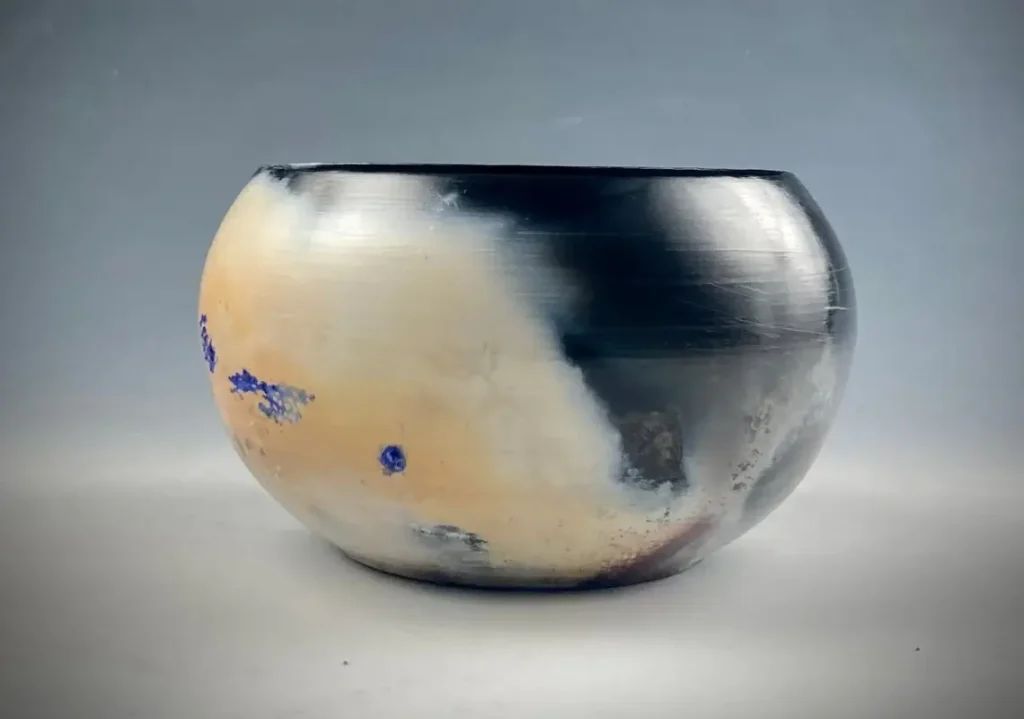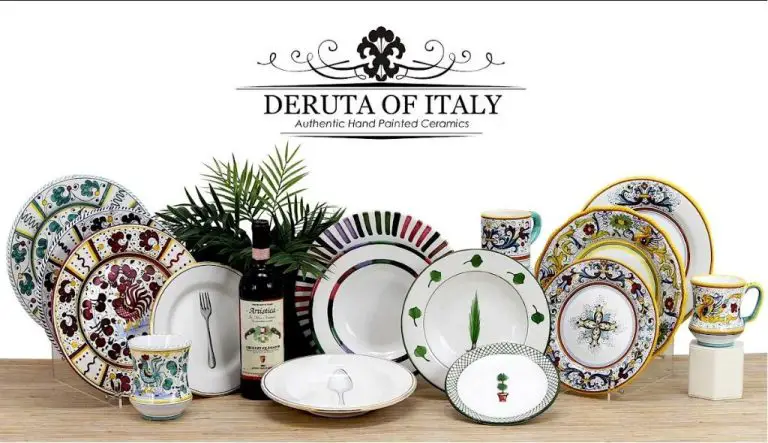What Does Ju Raku En Mean?
What is Ju Raku en?
Ju Raku en, which translates to “enjoy peace and longevity in public”, refers to a distinct style of Japanese ceramic art. It originated in Japan during the Momoyama period (1573-1615) and came into prominence in the early 17th century.
Ju Raku en pottery is characterized by simple, rustic shapes and natural, earthy colors. The pots are hand-formed rather than thrown on a wheel, giving them an organic, asymmetrical look. Decoration is minimal, often just simple impressed designs or white slip trailing. Glazes tend to be matte and subdued, emphasizing natural colors from wood firing.
A key feature of Ju Raku en ware is the variety of crackle patterns formed on the surface during the unique firing process. By carefully controlling temperature changes, artists create intentional cracks and crazing as part of the finished aesthetic.
Overall, Ju Raku en pottery evokes wabi-sabi ideals of transient beauty and appreciation for natural imperfections. The style embraces asymmetry, simplicity, and the effects of time and use on an object. It aims to convey a rustic, earthy elegance.
Origins and History
The Ju Raku En Japanese garden originated in Toowoomba, Australia. The garden was designed by Professor Kinsaku Nakane of Kyoto University and construction began in 1983 after 3 years of planning (https://najga.org/reference/ju-raku-en-japanese-garden/).
The Ju Raku En garden was built on the grounds of the University of Southern Queensland. The goal was to create an authentic Japanese stroll garden that would promote cultural exchange and understanding between Japan and Australia (https://gardendrum.com/2020/03/15/toowoomba-japanese-garden/).
The name Ju Raku En translates to “Garden of Longlasting Joy” in English. Professor Nakane designed the garden based on ancient Japanese garden traditions, incorporating elements like ponds, islands, stone lanterns, maple trees, and wooden bridges.
The Ju Raku En garden was built in 4 stages over several years, with each stage adding new features and expanding the garden. It provides visitors with an authentic Japanese garden experience through its design, aesthetics, and adherence to traditional techniques.
Characteristics
Ju Raku En is known for exhibiting quintessential elements of traditional Japanese garden design.
The garden utilizes native rocks and boulders to create sculptural compositions and mini landscapes. Large rock groupings are a signature feature, arranged to represent mountains and natural scenery (NAJGA).
Dry garden areas contain carefully raked gravel and sand, evoking the spirit of ocean waves or ripples on a pond. Simplicity and minimalism allow the textures and shapes of materials to stand out.
Ju Raku En incorporates water features like streams and waterfalls to complement tranquil spaces for reflection. The sound of moving water activates the senses (University of Southern Queensland).
Bridges, lanterns, pagodas, and other symbolic structures are positioned with intention to guide visitors through the landscape.
The garden exemplifies characteristic Japanese aesthetic principles like wabi-sabi and mottainai. Natural imperfections and simplicity help evoke tranquility.
Notable Artists
Some of the most influential and well-known ceramic artists known for their work in Ju Raku en include:
Chōjirō was a 16th century Japanese ceramic artist who founded the Raku family workshop. He was brought to Kyoto by Toyotomi Hideyoshi, who became his patron and provided him with a kiln. Chōjirō developed the traditional Raku style of hand-molded, lead-glazed earthenware that produces a unique crackled finish when removed from the kiln and cooled suddenly. His works are considered some of the first examples of Raku ware (Wikipedia).
Kichizaemon Raku (1510-1592) was the eldest son of Chōjirō and instrumental in developing Raku ware. He perfected his father’s techniques and created the standard Raku glaze recipe that is still used today. Kichizaemon’s imprint on the bottom of pieces, called kamon, became a tradition for Raku masters (Famous Japanese Potters).
Hon’ami Kōetsu (1558–1637) was a Japanese calligrapher, ceramist, lacquerer and painter who collaborated with the Raku family to produce many celebrated works of Japanese art. He pioneered a new type of pottery decoration known as akae, using red, green, yellow and sometimes black enamels layered on plain black or white backgrounds (Wikipedia).
The Firing Process

The firing process for Ju Raku en pottery is unique and specialized. According to the article on Soul Ceramics, the pieces are first glazed using a special raku glaze that can be purchased from craft shops or pottery wholesalers. The glazed pieces are then loaded into a kiln and fired rapidly to between 1475-1800°F (800-982°C). Once at temperature, the pieces are removed from the kiln using tongs and placed into containers filled with combustible materials like sawdust or newspaper. The containers are quickly closed, which cuts off the oxygen supply. This reduction process causes small carbon particles to affix to the glaze surface, creating the distinctive crackled metallic sheen associated with raku ware.
According to the WikiHow article, raku firing requires a coordinated team. One person opens the kiln, another uses tongs to remove the pieces into the cans, while a third person closes the can lids to cut off oxygen. The dramatic temperature change from the kiln to the air, combined with oxygen reduction, is what gives raku pottery its unique look.
Common Themes and Imagery
Ju Raku en pieces often depict common themes and imagery from nature. Scenes of birds, fish, flowers, trees, mountains, and water are very prevalent. Some characteristics of traditional Japanese landscape art seen in Ju Raku en include:
Waterfalls and streams – Representing the continuous flow of life (Source)
Ponds with koi fish – Symbolizing luck, prosperity, and determination (Source)
Bridges – Signifying transition and overcoming obstacles
Rocks and mountains – Conveying strength, stability, and eternity
Pine, bamboo, plum trees – Representing resilience and perseverance through adversity
Cranes and turtles – Denoting longevity, good fortune, and patience
Cherry blossoms – Indicating the fleeting nature of life and beauty
Ju Raku en pieces blend these natural elements and Buddhist iconography to reflect Japanese aesthetic ideals and philosophical beliefs.
Cultural Significance
Ju Raku En has profound cultural meaning and symbolism in Japanese culture. The name itself translates to “long life and happiness in a public garden”, reflecting core values in Japanese philosophy and religion. Gardens are regarded in Japan as sacred spaces that promote harmony between humans and nature.
The design of Ju Raku En embodies key elements of traditional Japanese garden aesthetics. The pond represents the sea, a revered symbol in Japan’s island culture. The rocky landscapes and pine trees evoke an idealized natural setting. Bridges, stone lanterns, and other decorative features add symbolic meaning related to Buddhism and Shintoism. Overall, the garden is intended to invoke a serene, spiritual environment for contemplation and well-being.
Historically, Japanese gardens were spaces for nobility and high society to pursue the arts, connect with nature, and host gatherings. Ju Raku En recreates this historic role of gardens as refined settings for cultural and social activities. The University of Southern Queensland uses the garden today for events, performing arts, and public enjoyment.
As a major Japanese garden outside of Japan, Ju Raku En also promotes cultural exchange. It provides an immersive experience of traditional Japanese landscaping for an international audience. The garden stands out as an important representation of Japanese identity beyond Japan’s borders.
Ju Raku en Today
In modern times, Ju Raku en continues to be an important part of Japanese arts and culture. Contemporary artists practice the centuries-old techniques to create contemporary works. Exhibitions featuring Ju Raku en ceramics are held around the world to showcase the artform. For example, the Japan Foundation held an exhibition titled “Ju Raku and Rimpa: The Aesthetics of Wabi-sabi” in Jakarta in 2015.
Ju Raku en pieces remain highly collected by museums and collectors globally. The Asian Art Museum in San Francisco has an extensive collection of Raku ware from the 16th to 19th centuries. The Museum of Fine Arts in Boston also has a significant collection of Raku tea bowls. Auction houses like Christie’s and Sotheby’s regularly feature important Ju Raku en pieces in their sales. This demonstrates the continued appreciation for Ju Raku en as an important historical and artistic tradition.
Notable Collections
Some of the most significant collections of Ju Raku en ceramics can be found at the following museums and institutions:
The Adachi Museum of Art in Yasugi, Shimane Prefecture has an extensive collection of Ju Raku en pieces. Their garden even contains a tea house called Juraku-an designed for chanoyu tea ceremonies where guests can view and appreciate the ceramics (Source).
The Toowoomba Japanese Garden or Ju Raku En at the University of Southern Queensland in Australia houses a remarkable assembly of Ju Raku en works. The 4.5 hectare garden was designed specifically to showcase a donation of 300 Ju Raku en pieces (Source).
The Honolulu Museum of Art has an extensive Asian art collection, including many excellent examples of Ju Raku en tea bowls and vessels.
Other major collections can be found at the Tokyo National Museum, the Kyoto National Museum, and numerous other museums and private collectors around the world.
References
If you’re interested in learning more about Ju Raku en, here are some useful sources and links for further reading:
- Ju Raku en at The Metropolitan Museum of Art
- Video about the history and process of Ju Raku en
- Encyclopedia Britannica overview of Raku ware
- Khan Academy article on Raku ware
- Ju Raku en tea bowl at The Met
- Ju Raku en incense container at Cleveland Museum of Art
- Britannica biography of Raku family
Let me know if you would like me to expand or modify the references section.



